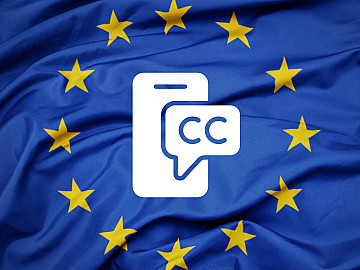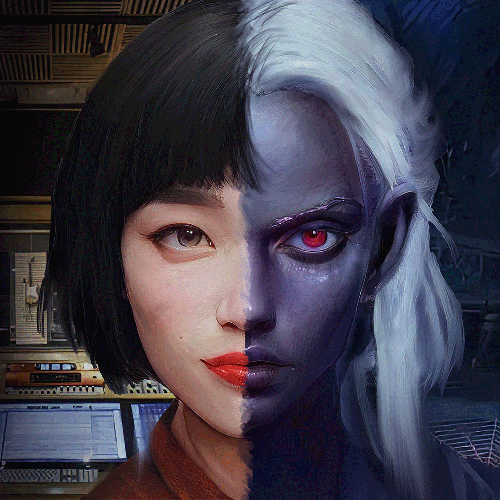Adjusting content for foreign-speaking audiences goes beyond mere translation, modern audiences expect higher quality media, so sometimes creativity is needed in localization.
Transcreation is a step beyond traditional localization and translation methods, which typically involve one-to-one language replacement. The service of transcreation is all about ultimate adaptation; altering content to suit the social, linguistic, and cultural components of international societies. The messaging and content of localized media is changed for comfort and preferences, rather than just for objective intelligibility.
Contemporary Audiences expect the best from imported content, and the industry of translation is booming consequently. Using transcreation methods can help you find success overseas, with faithful and accurate modifications. However, when exactly does an adaptation become a transcreation? Well, let’s find out.
Sound good? Reach out to Voquent for unbeatable content localization services at fair prices; connect with a global audience today.
Examples of Transcreation
Transcreation is a localization offshoot from the translation that aims to alter content for foreign audiences through large revisions to elements of the text that may not suit the target demographic’s culture, language, or preferences. This can include the changing of graphics, scripts, and even reworking entire sequences to fit the target language, whilst retaining the message’s spirit and intended emotional and informational impact.
In essence, transcreation invites nuance into the act of translating media and allows the translator to have a creative role in reshaping content. For example, where a simple localization may provide a direct dialogue translation when adapting a drama from Korean to English; a transcreation effort may rewrite the dialogue to match differing ideals and cultural values in the Western world, which would be reflected in the new dubbing services.
Translation vs transcreation invites some overlap between the two definitions, introducing some confusion. In its simplest form, rewriting messages with untranslatable phrases is technically a form of transcreating, as it involves a creative role from the person altering the text.
Although, this is just the tip of the iceberg. Let’s break down some of the core uses of this method through some examples of transcreation.
Transcreation in Animation
Animation is no stranger to adaptation; multilingual voice-over and dubbing have been a mainstay in the medium for a long time. Animation dubbing allows for significant freedom for the performer, as they are able to make use of the less nuanced expressions and faces to make painstaking synchronisation of audio to video slightly less constraining. This is why anime dubbing into multiple languages is big business – if slightly controversial: subs vs dubs blog here.
Furthermore, being able to edit scenes digitally through redrawn visuals is a bonus, making it less expensive and troublesome to adjust scenes in post-production for exporting to new countries. So, there are plenty of examples of transcreation evident in this medium.
Food in Pokémon
The 4Kids version of Pokémon was produced for American audiences, which made some well-known adjustments to the source material. One of the ways that the altered content changed for American viewership was the exclusion of traditional Japanese food in favour of food eaten in the west.
References to Onigiri (rice-based snacks) are swapped out in favour of “Jelly-filled donuts” – a treat that American kids would be familiar with and reflect western culture seemingly better. While this may seem somewhat egregious by modern standards, where Asian food has become less mystical as cultures collide, the 1990s audiences likely would have appreciated this change.
Cultural Changes in Doraemon
An anime often cited as making some of the most monumental alterations when localizing for Japan is Doraemon, a show that made significant transcreation efforts. The alterations included: Japanese Yen being replaced for American Dollars, altered phrases and dialogue, and the producers even went so far as to change scenes to remove indications of violence.

The adaptation here extends beyond cultural differences. American television has strict guidelines and restrictions regarding content, particularly surrounding violence in the media. This was the primary influence of the changes made from the original version.
Adapting Content for China in Iron Man 3
It is no secret that the Chinese film industry is massive, the biggest in the world in fact, which helps clarify the importance of reaching this marketplace. In tandem with that, it's worth acknowledging that the restrictions regarding this market are immense too, with only a set number of non-Chinese films being able to release – all of which must conform to strict rules.
Nevertheless, Marvel films have found success in this marketplace, with Disney, in particular, making huge strides. A major transcreation effort can be seen in Iron Man 3 (2013) – wherein unique scenes were added into the film, exclusively for the Chinese release.
The added sequences were not necessarily just for audiences though, the inclusion of Chinese film stars, like Fan Bing Bing, helped the movie meet the criteria to be released in China. But it doesn’t mean that the added content was well received, as it was considered egregious by most viewers.
Circumventing Censorship and Video games
Video games are often at the forefront of the discussion of media-based violence and controversy, so this medium has had to become an expert chameleon when it comes to international transcreation. Games relating to World War II have a history of turbulent release in Germany, as the country’s history has impacted the degree to which a game may showcase depictions of Nazism.
Wolfenstein II had to adapt itself heavily to release in this region. The game concerns itself with sci-fi, an alternate history where the Axis powers succeeded in conquering the world, which introduced difficulty to its German versioning. Removing instances of Swastikas was one way, however, a larger change was needed for the scene in which Adolf Hitler appears in-game.
The international release of the game has a frailed older Hitler show up to vet actors, although this is changed dramatically for the German game. The character model has been changed to remove his notorious moustache, removed any derogatory dialogue by the character toward Jewish people, and the voice-over was changed to have the German-speaking actor refer to him as “The Chancellor” as opposed to Hitler.
This segment of the game captures a wide swath of elements that are needed for effective transcreation, making it an excellent example.
Commercial Transcreation and Messaging
Transcreation’s heart is all about the retention of the message when the text is changed for new audiences. But no message exists in a vacuum, that is to say that a message’s effectiveness is dependent on the medium it is presented through. As Media philosopher Marshall McLuhan once said “The medium is the message”.
Commercial transcreation may be the most important of all, as the ability to sway hearts and minds through advertisement is directly paired with the success of the product or service being advertised. Companies like Coca-Cola and Red Bull have used transcreation to alter their products for foreign customers. Coca-Cola famously ran a campaign where they would print popular names on the label of the bottles. Rather than just translating this content, different territories had different names on the labels, native names that correspond with the popular names of each country.
Coca-Cola famously ran a campaign where they would print popular names on the label of the bottles. Rather than just translating this content, different territories had different names on the labels, native names that correspond with the popular names of each country.
Likewise, Red Bull’s Chinese can has had its logo and colour palette adapted for Chinese markets; gold rather than the traditional silver; to match the fact that Chinese culture view gold and red as lucky. This has helped the massive energy drink giant keep up with the market’s growth.
The act of translating content for new audiences is no simple measure. The modern consumer expects perfect adaptation in their media, which makes sense, as there are so many companies doing it right. From imported entertainment to energy drinks in China; there are many ways that Transcreation can enhance any localization efforts when harnessing the human creative element being tapped into. Now that you know the answer to the question of what does transcreation mean, you can utilise it to master the international variants of your next project.
Localize your content for any global market
Tell us about your project
Sometimes we include links to online retail stores such as Amazon. As an Amazon Associate, if you click on a link and make a
purchase, we may receive a small commission at no additional cost to you.


















